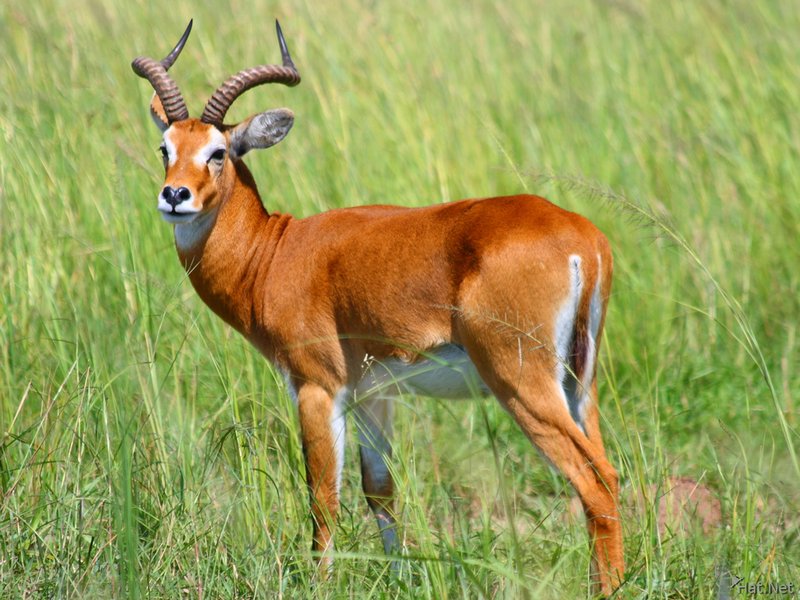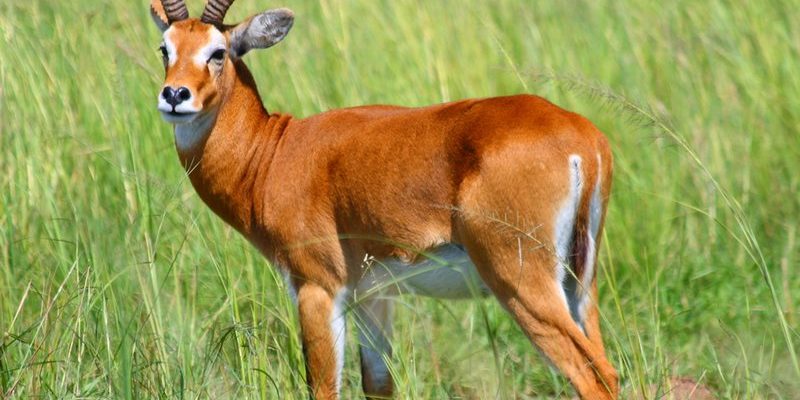
The Ugandan Kob, a medium-sized antelope, thrives in areas rich in grass and water. They’re known for their social nature, often gathering in large herds. This behavior not only enhances their safety against predators but also plays a crucial role in maintaining the ecosystems they inhabit. But just like a vibrant painting can fade over time, the future of the Ugandan Kob hangs in the balance. As we dive into the details, you might be surprised by the challenges they face and the global response to their conservation.
Understanding the Ugandan Kob’s Habitat
The Ugandan Kob primarily inhabits the wetlands and grasslands of Uganda, especially in places like Queen Elizabeth National Park. These areas provide the lush grasses and adequate water sources that are essential for their survival. Picture this: rolling hills dotted with patches of water where the Kobs can be found lounging under the sun, or playfully chasing each other in the open fields.
Unfortunately, their habitat is not as secure as it once was. As urbanization progresses, these critical ecosystems are shrinking. Wetland drainage for agriculture and development has led to significant habitat loss. It’s like trying to fit a puzzle piece into a space that’s becoming increasingly smaller. If we don’t address these habitat changes, the Ugandan Kob could face serious survival challenges in the future.
Current Conservation Status
When it comes to conservation, the Ugandan Kob is currently classified as “Least Concern” by the International Union for Conservation of Nature (IUCN). However, that doesn’t paint the whole picture. While they might not be classified as endangered, their populations are declining due to various factors. In some regions, they face increasing pressure from poaching and conflict with human activities.
Let’s break it down a bit further. Conservation efforts are underway, but they need our attention and support. The Ugandan Kob’s populations are largely protected in national parks, yet it’s the outside areas where they’re more vulnerable to threats. So, while their conservation status is stable in protected areas, their future depends heavily on the preservation of their habitats outside these zones.
Threats Facing the Ugandan Kob
Just like any living creature, the Ugandan Kob has its fair share of challenges. One of the most pressing threats is habitat loss. As mentioned earlier, human activities such as agriculture and urbanization have taken a toll on their natural environments. The grasslands where they thrive are often converted into farmland, disrupting their homes and food sources.
In addition to habitat loss, poaching is another significant threat. Even though the Ugandan Kob is protected in national parks, illegal hunting still occurs, driven by the demand for bushmeat and trophies. Imagine being in a vast, open field, but lurking just beyond the horizon is the danger that could deplete your herd. This is a grim reality for many Ugandan Kobs.
Conservation Efforts and Initiatives
Fortunately, there’s a growing commitment to conserving the Ugandan Kob and its habitat. Various organizations, both local and international, are investing in conservation programs aimed at protecting this iconic species. These efforts focus on environmental education, anti-poaching initiatives, and habitat restoration.
One notable program is the Community Based Conservation approach. This strategy involves local communities in the conservation process, emphasizing the importance of preserving wildlife for future generations. By engaging locals and providing alternative livelihoods, there’s a better chance of reducing poaching and habitat destruction. It’s about making conservation a shared responsibility, where everyone has a part to play.
The Role of Tourism in Conservation
Another interesting aspect of Ugandan Kob conservation is the impact of eco-tourism. Tourists flock to Uganda to see these beautiful animals in their natural habitat – and it’s this tourism that funds many conservation efforts. Think of it like a symbiotic relationship: the more we appreciate and value these animals, the more funding and community support are generated for their conservation.
Tourism also raises awareness about the challenges facing the Ugandan Kob. By sharing their stories and beauty, we encourage more people to advocate for their preservation. You might even find yourself inspired to get involved, whether through visiting Uganda or supporting conservation organizations.
What You Can Do to Help
You might be wondering how you can make a difference for the Ugandan Kob. There are a few ways individuals can contribute to their conservation. First, consider supporting organizations that focus on wildlife conservation in Uganda. Donations can go a long way in funding anti-poaching patrols or habitat restoration projects.
Another way to help is by raising awareness. Share information about the Ugandan Kob and their plight on social media or among friends. The more people know about these animals, the more likely it is that they’ll rally behind the cause. Plus, every little bit counts, and together we can create a substantial impact.
Final Thoughts on the Ugandan Kob
In conclusion, while the Ugandan Kob might not be classified as endangered, it’s important to recognize the challenges they face. Their beautiful, grassy habitats are under threat, and without concerted conservation efforts, their future could be at risk. By understanding these challenges and supporting conservation initiatives, we can ensure that the Ugandan Kob continues to grace the savannas of Uganda for generations to come.
So, the next time you think of the Ugandan Kob, remember—it’s more than just an antelope. It’s a symbol of the delicate balance between nature and human activity, and it needs our support to thrive.

